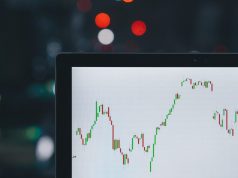Top 3 Small-cap Dividend Stocks to Buy Now
A shrewd investor once commented, “Opportunity dances with those already on the dance floor.” In essence, one cannot capitalize on opportunities one is not prepared for, underscoring the significance of understanding current market trends for investors. As we approach 2024, particularly noteworthy trends influencing the stock market landscape are:
- Rising inflation, which can disrupt market dynamics and increase pressure on bond yields.
- An amplified transition towards digital services, propelling the worth of technology sector stocks.
- Sustainability and green initiatives garner broader acceptance, enhancing the value of eco-friendly and energy-efficient companies.
- Volatile interest rates make financing unpredictable, thereby inhibiting business expansion.
- Geopolitical tensions, spurring global uncertainty
The uniqueness of this financial climate has brought about an increased focus on securing stable, dividend-paying investments. Amid financial turbulence and market volatility, dividend stocks offer the dual advantage of consistent income and potential for capital growth. Furthermore, dividends provide a cushion for investors, dampening the impact of share price swings. While large-caps are traditionally looked at for dividends, small-cap stocks have begun to command attention due to their inherent growth potential and opportunity for a higher yield.
Small-cap stocks, typically those with a market cap between $300 million and $2 billion, are often overlooked in favour of their large-cap counterparts. However, these stocks have demonstrated explosive growth potential, frequently outperforming the broader market indexes. This growth potential combined with robust dividend payouts can deliver a powerful punch for the long-term portfolios of investors.
Additionally, small-cap dividend stocks are becoming notably significant with the advent of more hawkish monetary policies. As interest rates are projected to rise, businesses with secure cash flows–characteristic of dividend-paying companies–are generally better positioned to navigate through rate hikes. Thus, even in a challenging financial ecosystem, these stocks offer investors benefits they wouldn’t want to miss.
“I believe small-cap dividend stocks particularly offer a lucrative investment option. Given their ability to outperform larger indices and the income stability provided through dividends, these stocks should be an integral part of any diverse investment portfolio,” says Francis Jensen, a veteran financial analyst.
With a dynamic financial landscape as we march into 2024, the benefits of dividend stocks coupled with the explosive potential of small-cap stocks presents a compelling case for them to be part of any diversified portfolio. The three small-cap dividend stocks under $20 are perfect tools to seize this financial opportunity.
In the next section, we’ll reveal and provide analysis for these three promising stocks.
Top 3 Small-Cap Dividend Stocks Under $20 to Watch in 2024
FAT Brands Inc. (FAT)
FAT Brands, a global franchising company, has shown tremendous growth in the fast-casual dining space. The company consistently pays dividends, reflecting steady cash flows from robust franchise fee structure and promising expansions. With its stocks priced well under $20, it’s a perfect small-cap dividend investment in this changing market scenario.
BGSF, Inc. (BGSF)
Emerging strong in the workforce solutions segment, BGSF offers comprehensive dividend yields, supported by its robust revenues. As remote work concepts become mainstream, a ripple is created in HR solutions’ demand, positioning BGSF at the peak of this wave. Given its attractive price, BGSF promises remarkable potential for growth within the small-cap dividend space.
AmeriServ Financial, Inc. (ASRV)
ASRV, a multi-billion-dollar banking company, has withstood the challenges of the financial market consistently. It returns a portion of its steady earnings to shareholders through dividends, a testament to its strong financial health. With an affordable stock price under $20 and as a small-cap dividend player, ASRV stands out as an attractive investment for 2024.
Final Thoughts
In the sought-after space of dividend-paying and small-cap investments, the right selection can mean the difference between a mediocre return and a highly lucrative one. I am convinced that FAT Brands Inc., BGSF, Inc., and AmeriServ Financial, Inc. exhibit the attributes of steadfast growth, attractive valuation, and rewarding dividend yields. These companies are positioned well to capitalize on 2024’s anticipated market trends while offering respectable dividend returns for investors.
Investment, like knowledge, rewards the diligent and the patient. As a seasoned investor, I have grown to appreciate the charm of dividend stocks and the potential of small-cap scenarios, but the onus of choice always rests solely on the investor. As we stride into 2024, I, like you, will be watching closely as these small-cap dividend stocks shape the market narrative.













